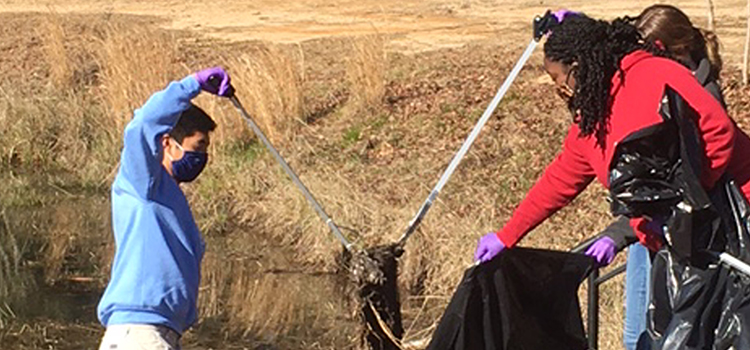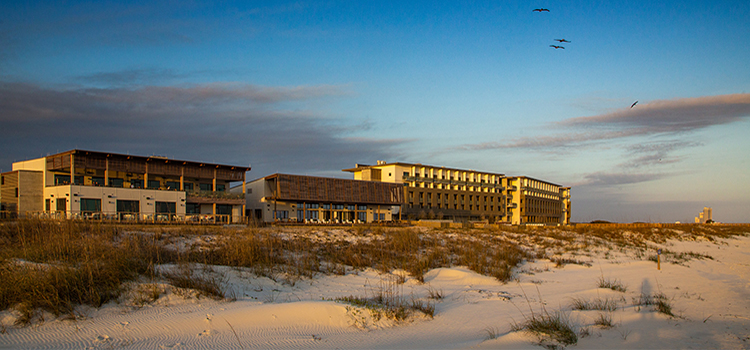New, Green, Storm-Water Controls Installed on Campus
Posted on January 26, 2018 by USA Sustainability Committee

USA is located in the headwater region of the Three Mile Creek (TMC), a major urban stream that eventually flows into the Mobile River, just north of downtown Mobile. The TMC watershed drains over 30 square miles and has recently been designated by the Alabama Department of Environmental Management (ADEM) as priority watershed due to its water quality impairment and is in need of restoration. One of the major TMC pollutants is identified as “excessive sedimentation”, due to increased storm water runoff and the resulting stream bank erosion. And importantly, USA has been identified as a contributor to “excessive sedimentation”.
With a grant from ADEM, Dr. Kevin White (Professor and Chair of Civil, Coastal, & Environmental Engineering) and Randy Moon (Assoc. V.P., Facilities Management) have designed and constructed several bio-infiltration systems just west of the campus Admin Building to capture, store, and infiltrate storm water runoff so as to minimize erosion and sediment transport from this part of campus. This area between Admin and Meisler Hall is largely undeveloped, but exhibits a significant slope (~5%) and several un-vegetated areas where storm water runoff often erodes the bare soil. The linear bio-infiltration systems (~8 feet wide and 30-50 feet long) were designed as shallow (3-feet deep), gravel-filled depressions that act to capture storm water and sediment. The bio-infiltration systems are intermittently planted with vegetation, so that the entire system looks to be normal landscaping, but in fact is also functioning as an effective storm water management feature (see photo below). This type of storm water management feature is referred to as “green” infrastructure, and is known to be both environmentally friendly and more cost-effective (in many cases) than traditional “hard” infrastructure (underground piping, concrete-lined channels, etc.). It is clear that there is a place for both types of infrastructure (green and traditional hard), depending on the situation.
Monitoring of sediment transport upstream and downstream of these bioinfiltration systems during rainfall/runoff events is ongoing (by civil engineering and environmental toxicology students) and will help determine effectiveness. Specific objectives of the project are to:
- Implement non-point source (NPS) components of the watershed-based management plan.
- Implement NPS best management practices (BMPs) that are technically sound, environmentally protective, and economically-sensible to protect water quality using a watershed or ecosystem-based conservation and restoration approach.
- Facilitate opportunities to enhance stakeholder (campus administrators, faculty, students, etc.) knowledge and awareness.
- Monitor, analyze, and/or report data and information to enhance public and private sector appraisal of project implementation progress, performance, and accountability.
-

Every Bottle Back
In an effort to encourage recycling on campus, we partnered with our f...
November 9, 2021 -

Celebrate Earth Day 2021
Gulf Coast Creation Care, the Mobile Public Library and the Crescent T...
April 12, 2021 -

Clean Up Day
Thanks to the SGA and others for participating in Clean Up Day on Febr...
February 23, 2021 -

Guest Speaker on Sustainable Tourism
Guest Speaker Chandra Wright will be discussing Sustainable Tourism an...
April 9, 2019


